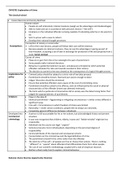Summary
Summary CMY3701 The Explanation of crime - study notes
- Institution
- University Of South Africa (Unisa)
Study notes made in preparation for the exam for CMY3701 The Explanation of crime. To be used in conjunction with the approved study guide
[Show more]



